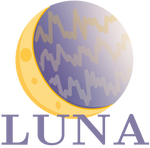Overview
BioFoundation is an open-source research framework for developing and deploying foundation models for biomedical signal analysis, with a particular focus on EEG (electroencephalography) data. The project powers the latest generation of topology-agnostic biosignal models — including LUNA (NeurIPS 2025), FEMBA (EMBC 2025), and CEReBrO (arXiv 2025) — and provides the shared infrastructure that enables them to scale across datasets, montages, and downstream tasks.
LUNA: Foundation Model for EEG Analysis
Accepted at NeurIPS 2025 🏆
Our flagship model, LUNA (Lightweight Unified Network for EEG Analysis), addresses a critical challenge in brain signal processing: different EEG datasets use varying electrode configurations, which has historically hindered the development of large-scale foundation models.
Key Innovations
Topology-Agnostic Architecture
- Works seamlessly across different electrode layouts
- Uses learned queries and cross-attention mechanisms
- Compresses multi-channel EEG into unified latent representations
Unprecedented Efficiency
- 300× reduction in FLOPs compared to standard transformers
- 10× reduction in GPU memory usage
- Linear complexity relative to channel count (not quadratic)
Large-Scale Pretraining
- Pretrained on 21,000+ hours of EEG data
- Diverse electrode configurations and recording conditions
- Masked-patch reconstruction objectives
State-of-the-Art Performance
- 0.921 AUROC on TUAR artifact-detection benchmark
- Strong transfer across four clinical tasks:
- Abnormality detection (TUAB)
- Artifact rejection (TUAR)
- Slowing classification (TUSL)
- Emotion recognition (SEED-V)
Flagship Foundation Models
BioFoundation maintains a family of EEG foundation models, all sharing the same training stack, data tooling, and evaluation harness:
LUNA · NeurIPS 2025
- Topology-agnostic architecture with channel unification and cross-attention
- Linear complexity with respect to electrode count
- Pre-trained on 21k+ hours of EEG and released on Hugging Face: thorir/LUNA
FEMBA · EMBC 2025
- Bidirectional Mamba state-space architecture with linear-time scaling
- 81.82% balanced accuracy on TUAB and 0.949 AUROC on TUAR
- Available on Hugging Face: thorir/FEMBA
CEReBrO · arXiv 2025
- Alternating-attention encoder that jointly models temporal and spatial correlations
- 2× speed improvement and 6× lower memory vs. dense self-attention
- Released via the BioFoundation codebase (see repository)
All models share:
- Codebase: pulp-bio/biofoundation
- Licensing: Apache 2.0 for code, CC BY-ND 4.0 for official weight releases
- Configuration system: Hydra + PyTorch Lightning for reproducible experiments
- Evaluation: Consistent TUAB/TUAR/TUSL benchmarks and downstream EEG tasks
Applications
The BioFoundation models target both clinical and research scenarios:
Clinical Workflows
- Abnormality detection for diagnostic triage
- Seizure prediction and monitoring on wearable EEG
- Artifact rejection and signal cleaning
- Sleep staging and long-term physiological monitoring
Research & Interfaces
- Emotion recognition and affective computing
- Brain-computer interfaces with low-channel wearables
- Cognitive workload and attention tracking
- Neurofeedback with topology-agnostic electrodes
Resources
- ⭐ 31 GitHub stars • 🍴 3 forks (live metrics)
- 📚 Codebase: BioFoundation on GitHub
- 🤗 Model Weights: LUNA · FEMBA
- 📄 Paper: LUNA preprint (arXiv:2510.22257)
- 🔭 Roadmap: Upcoming releases include CEReBrO checkpoints and additional downstream adapters
Citation
If you use BioFoundation in your research, please cite:
@inproceedings{doner2025luna,
title={{LUNA}: Efficient and Topology-Agnostic Foundation Model for {EEG} Signal Analysis},
author={D{\"o}ner, Berkay and Ingolfsson, Thorir Mar and Benini, Luca and Li, Yawei},
booktitle={Neural Information Processing Systems},
year={2025}
}
Collaboration
This project is actively developed and we welcome contributions! Whether you’re interested in:
- Extending the framework to new biosignals
- Improving model architectures
- Adding new downstream tasks
- Optimizing for edge deployment
Get involved:
This project is part of ongoing research at ETH Zurich’s Integrated Systems Laboratory (IIS) in collaboration with leading researchers in TinyML and biomedical signal processing.

